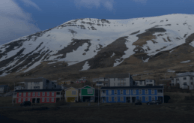EXPERIENCE THE ADVENTURES
Towns of North Iceland
Húnaþing region



Skagaströnd



Blönduós



Hvammstangi



Laugarbakki



North East region



Kópasker



Raufarhöfn



Þórshöfn



Bakkafjörður



Dalvík



Húsavík



Whale watching in Húsavík



Akureyri



The Islands



Hrísey



Grímey



Mývatn region



Fjallabyggð region



Siglufjörður



Ólafsfjörður



Hiking in Fjallabyggð



Skagafjörður



Towns of skagafjörður



Varmahlíð



Sauðárkrókur



Hofsós



What to do in Skagafjörður



